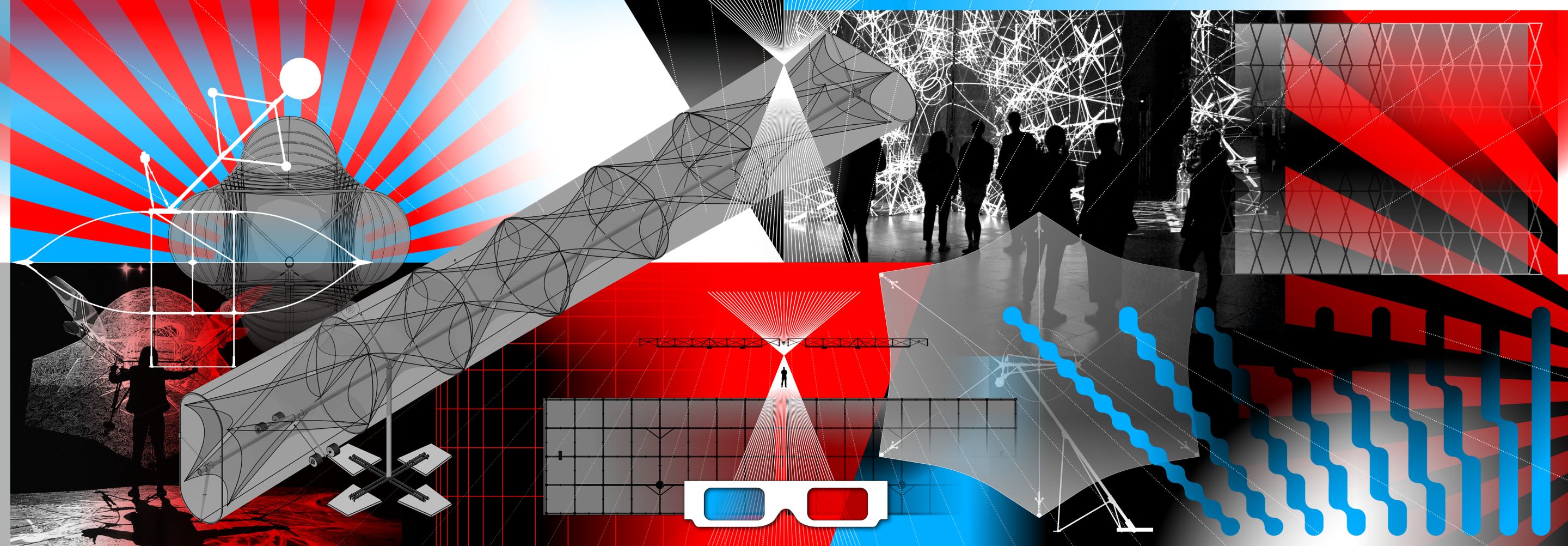From Tuesday to Sunday
11 am – 6 pm
Free Entry
Place Cosandey
1015 Lausanne
At the intersection of art, technology and construction, Cyber Physical: Architecture in Real Time brings together four dynamic and immersive installations that reshape our perception of space by transforming virtual data into tangible and interactive kinetic sculptures. Through 3D projections, augmented reality and artificial intelligence, the exhibition allows publics to interact with ever-evolving architectural structures capable of listening, learning, and reshaping themselves in real time.
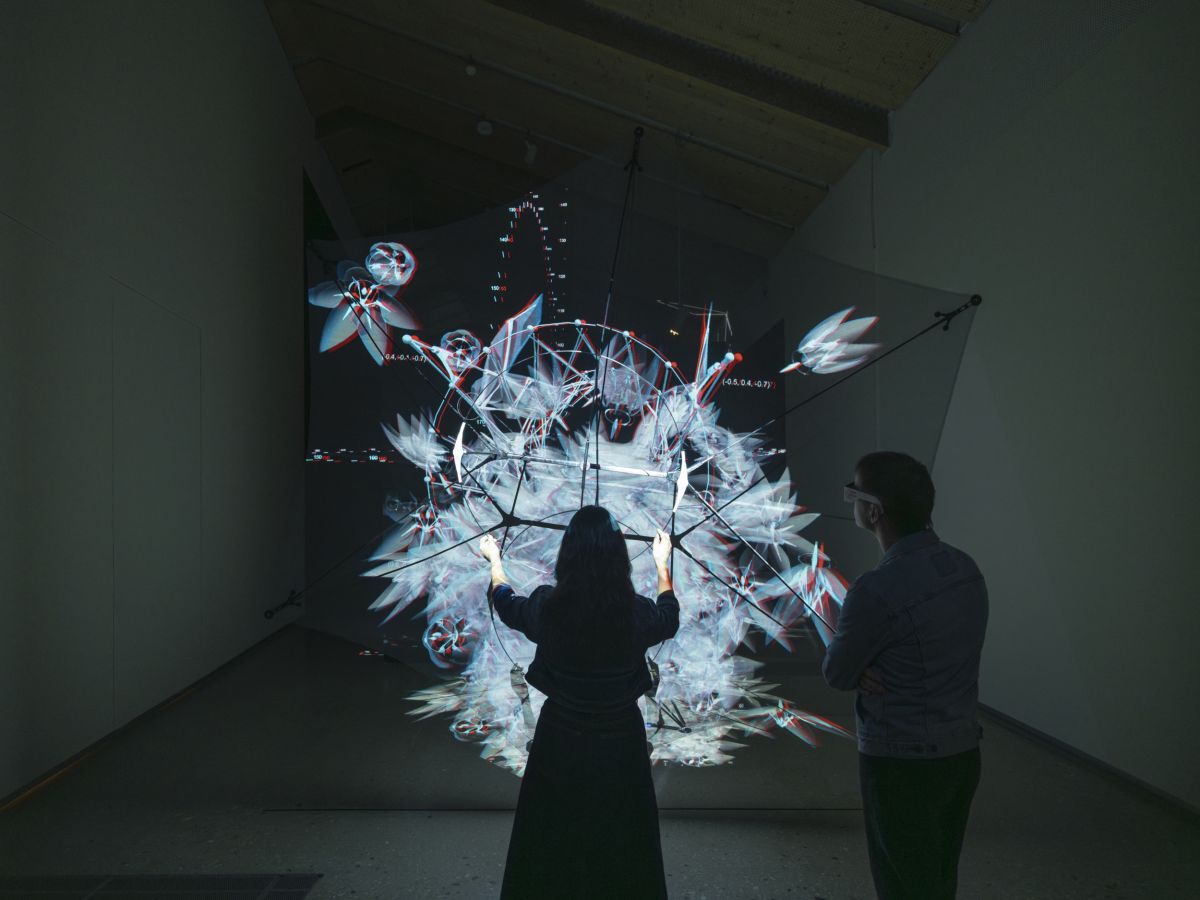
LightWing II, Uwe Rieger & Yinan Liu, 2019
Photo: Julien Gremaud
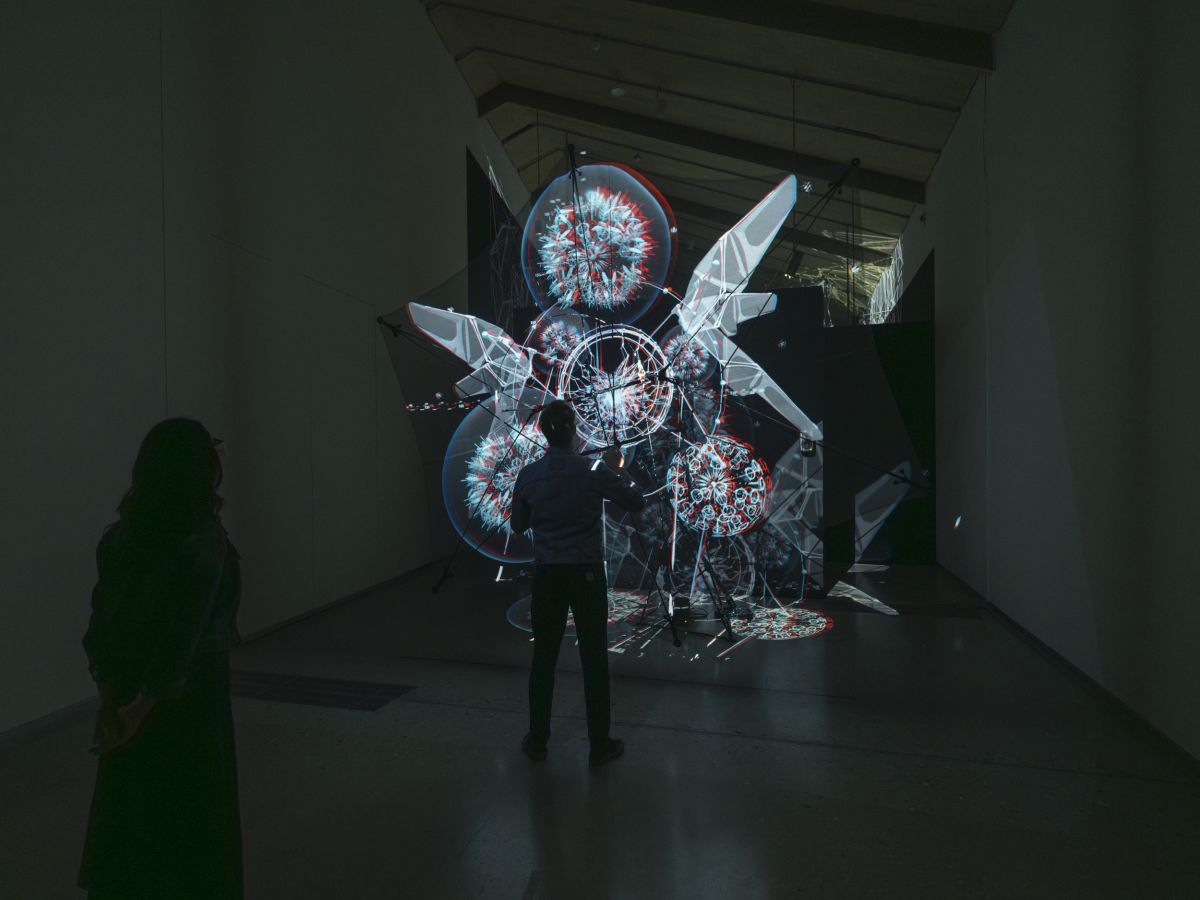
LightWing II, Uwe Rieger & Yinan Liu, 2019
Photo: Julien Gremaud
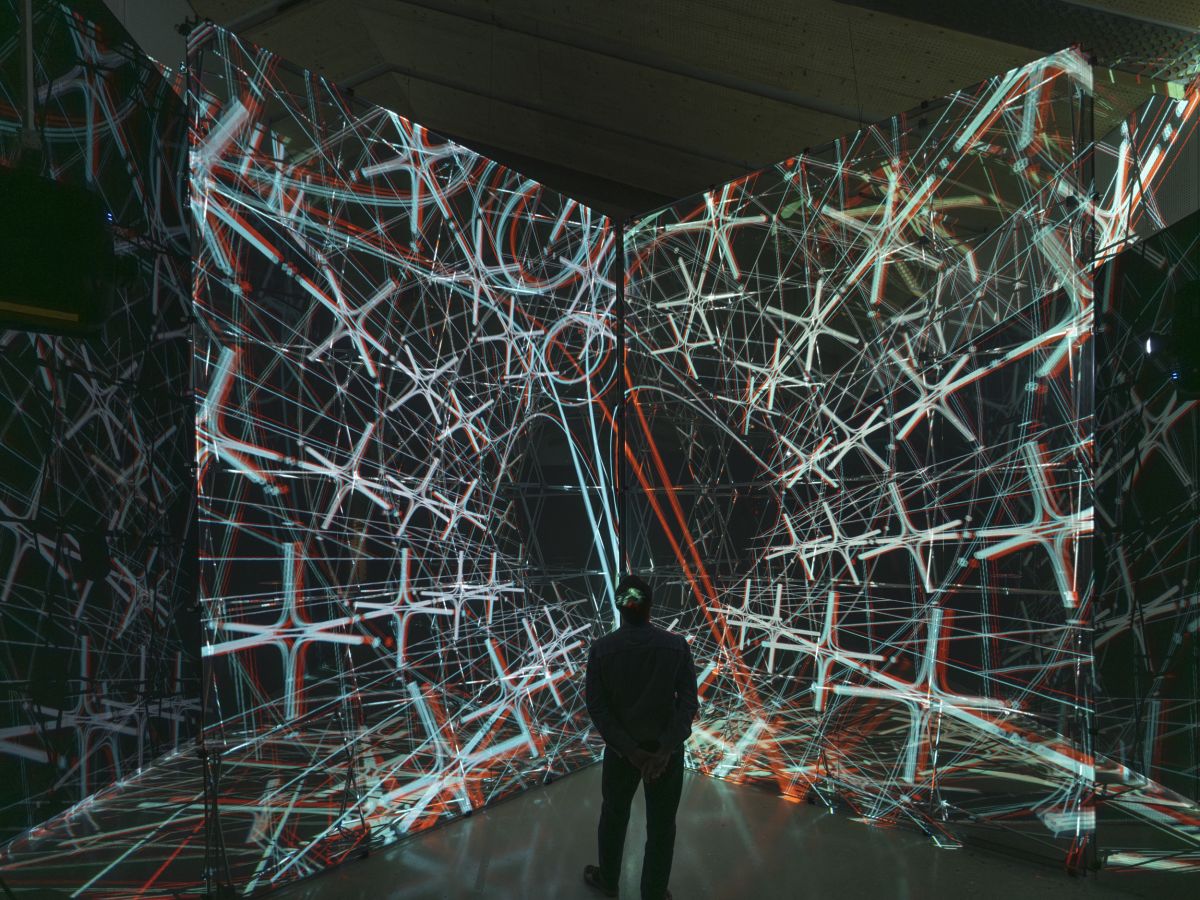
LightTank II, Uwe Rieger & Yinan Liu, 2018
Photo: Julien Gremaud

LightTank II, Uwe Rieger & Yinan Liu, 2018
Photo: Julien Gremaud
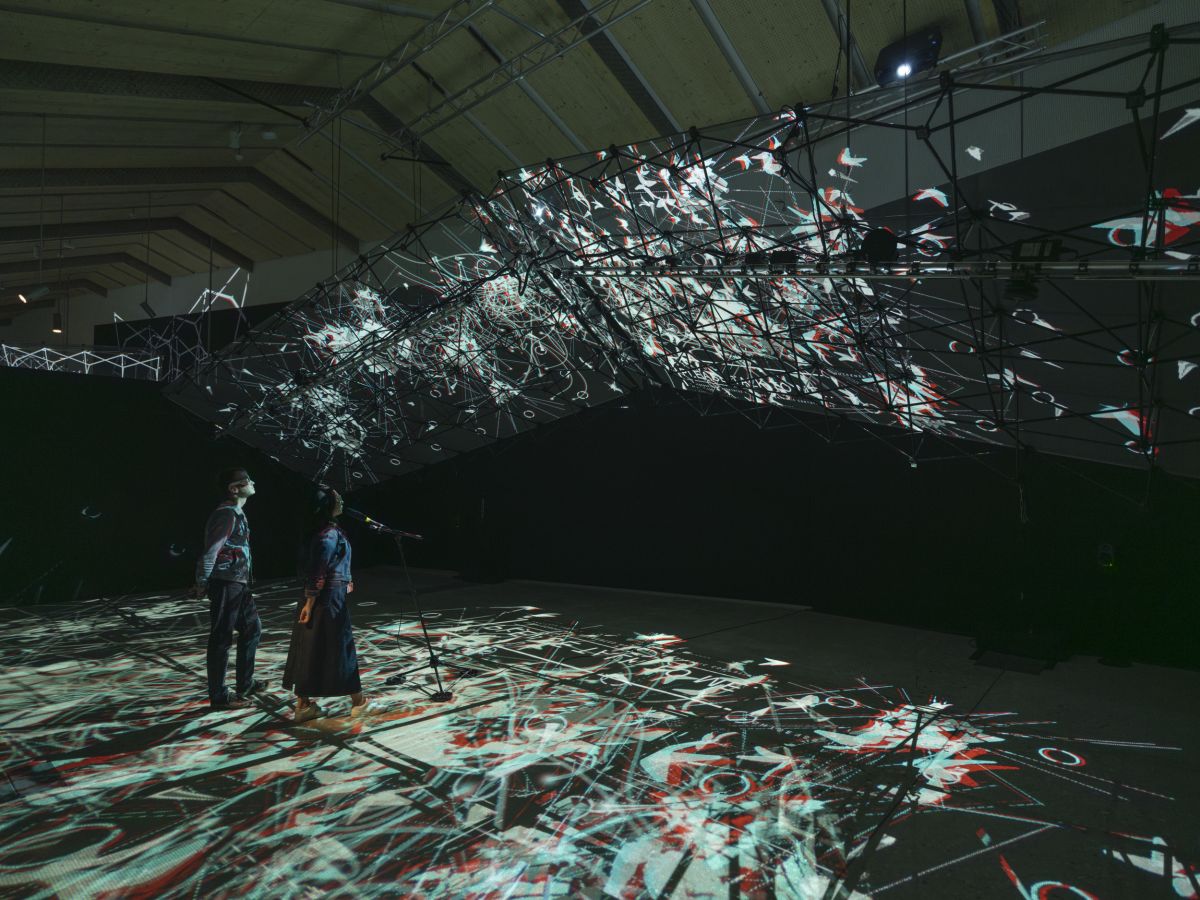
LightSense, Uwe Rieger & Yinan Liu, 2022
Photo: Julien Gremaud
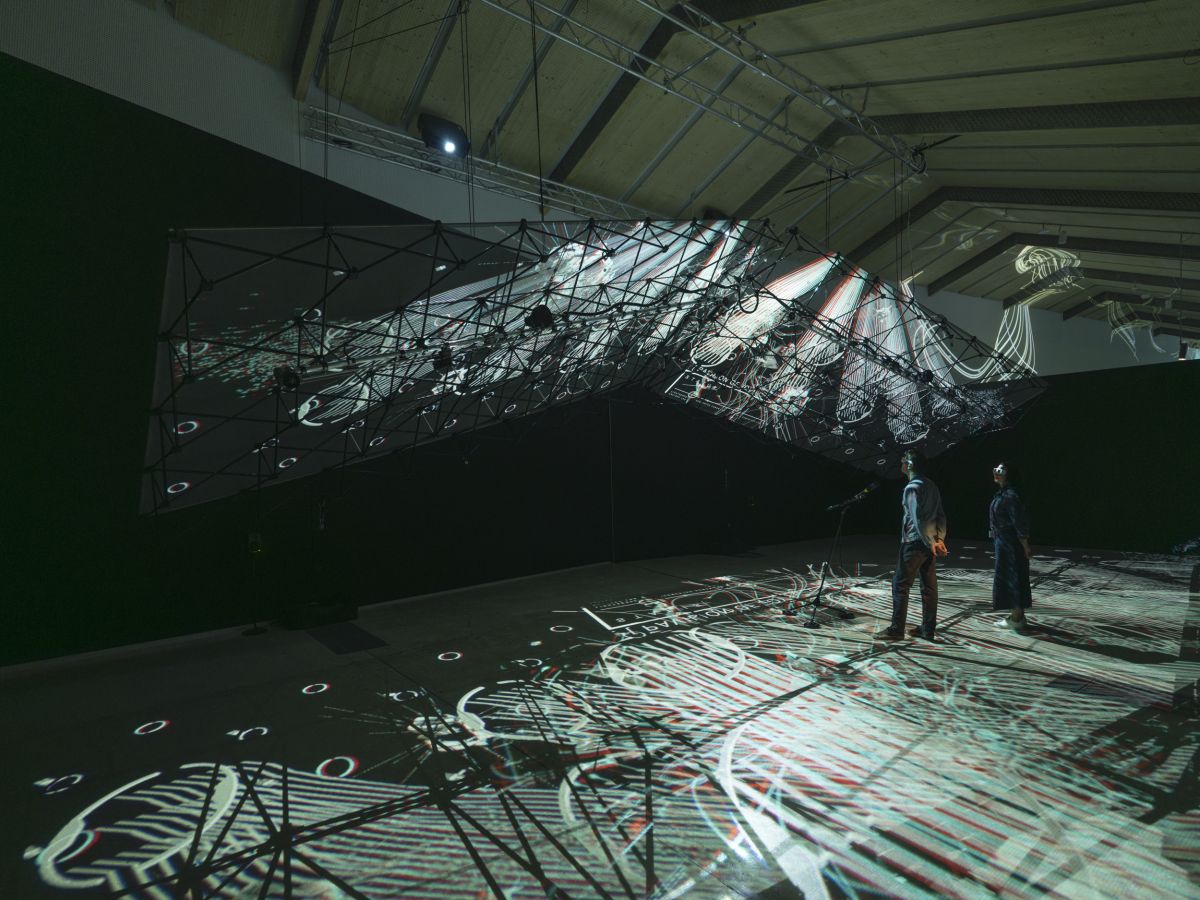
LightSense, Uwe Rieger & Yinan Liu, 2022
Photo: Julien Gremaud
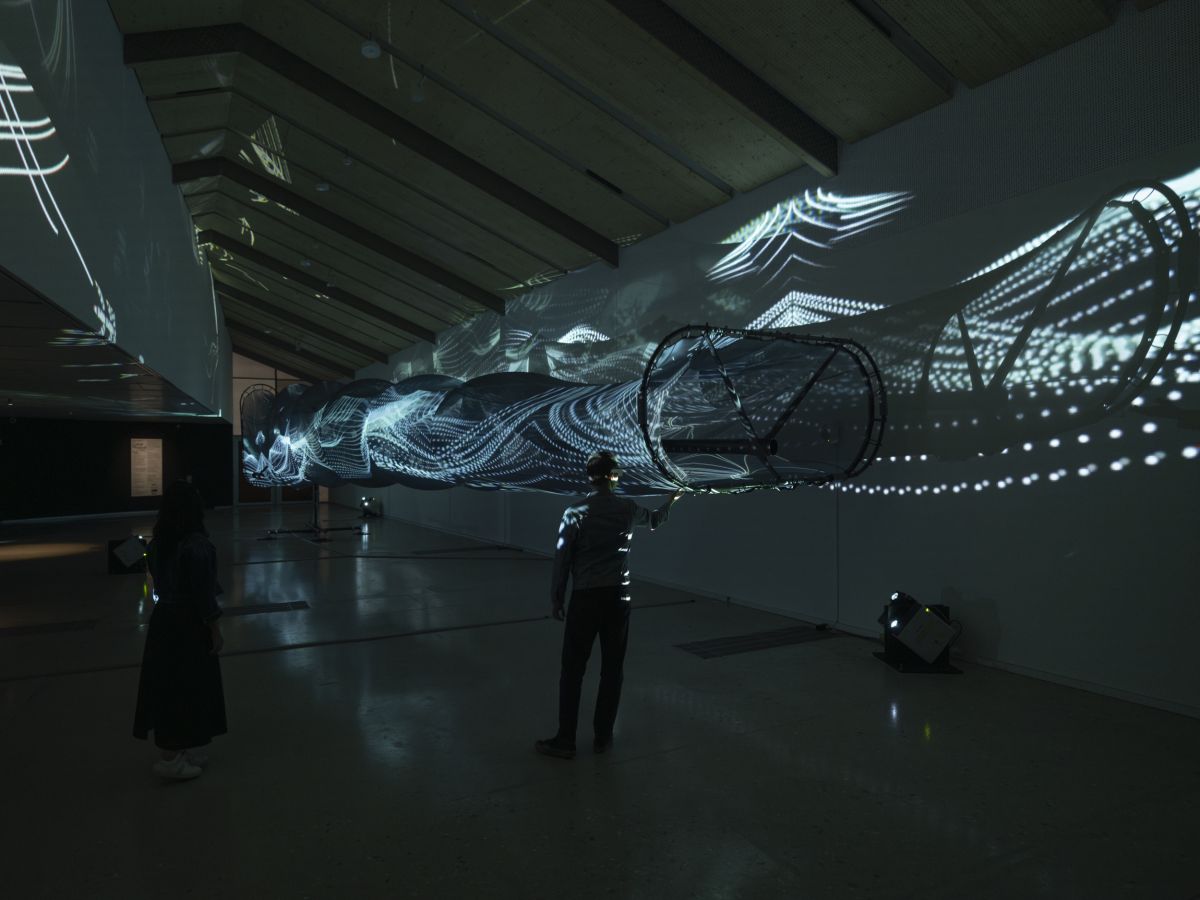
LightScale II, Uwe Rieger & Yinan Liu, 2017
Photo: Julien Gremaud
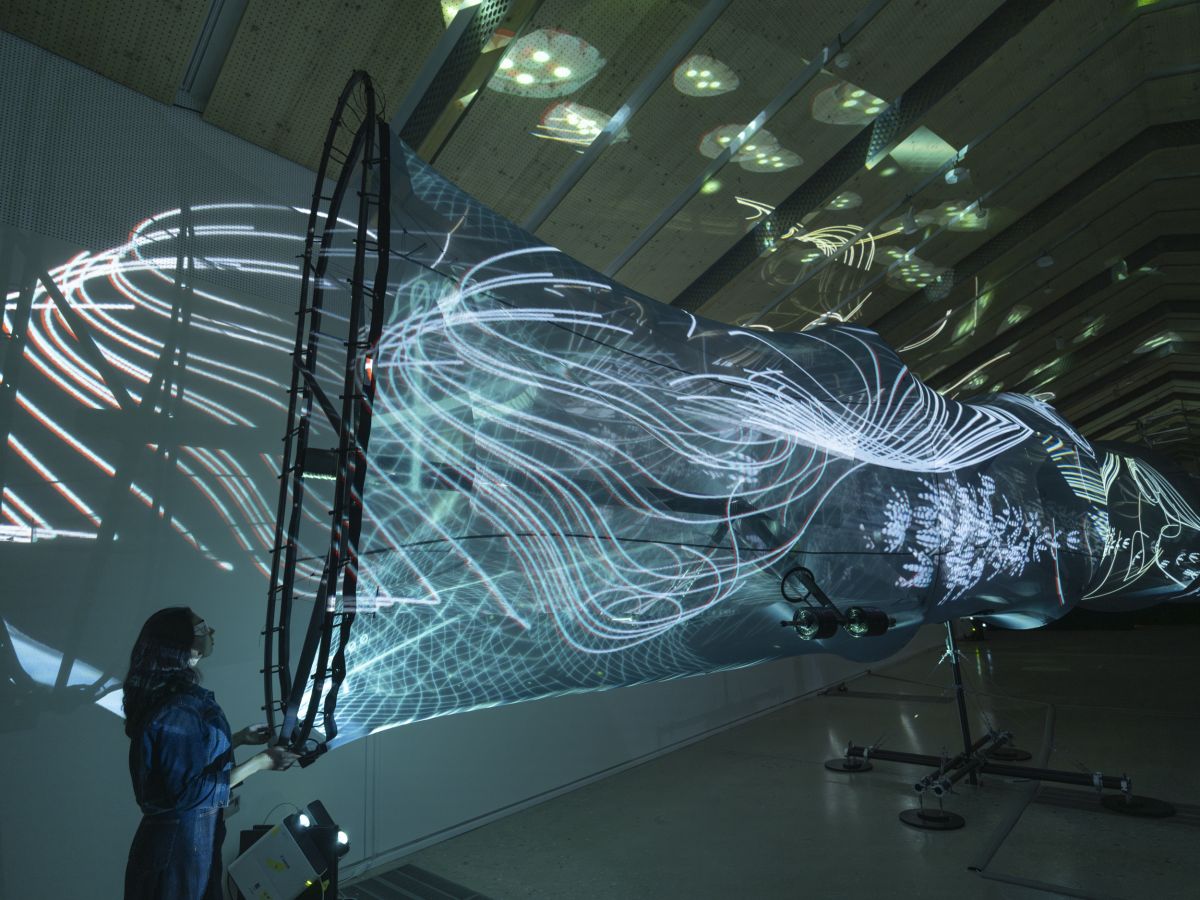
LightScale II, Uwe Rieger & Yinan Liu, 2017
Photo: Julien Gremaud

Uwe Rieger & Yinan Liu.
The exhibition brings together, for the first time, the LightSeries ensemble — four dynamic installations that explore distinct aspects of cyber-physical architecture. Each one transforms the way we engage with architecture and space by creating environments that bring together tactile data, holographic narratives, and immersive soundscapes.
In captivating environments of light, sound and movement, Cyber Physical provokes new perspectives on the future of our built environment. Towards a prospect of an architecture that goes beyond functionality and aesthetics the exhibition unveils intimate, engaging and personalised experiences of space.
-
LightWing II
LightWing II offers a sensory and interactive experience of digital spaces. A delicate translucent wing, in the hands of the visitor, acts as an almost invisible screen that gives shape to 3D projections. When manipulated, it immerses the user in virtual dreamlike environments — swarms of creatures, a silky bubble, a velvet vortex or a forest of dandelions — that come to life and react to the slightest of its oscillations. By combining three-dimensional digital animations with a moving physical structure, LightWing II creates a sensory relationship between the user and a virtual environment, while also involving other visitors. The installation becomes a collective experience, a hybrid space that is at once tangible and immaterial. -> More
-
LightTank II
The LightTank II installation is a monumental transparent structure. Its four walls, arranged in an "X" configuration, are enveloped in 3D digital projections that transcend and expand over the physical space. The foreground and background merge, the physical and digital spaces perfectly overlap. A screen allows the audience to activate the dynamic three-dimensional projections that evolve around them. Viewable in 360°, LightTank II offers an interactive experience with multiple viewpoints, an immersion in a holographic volume in constant mutation. -> More
-
LightSense
LightSense proposes an intimate interaction with an immersive and responsive architectural body driven by artificial intelligence. Suspended above the visitors, it unfolds two large translucent wings that move in a bird-like motion. Their 12-metre span is expanded with 3D digital projections that evolve and transform in response to the audience. A microphone placed directly underneath the structure invites visitors to vocally interact with it. Trained on 60,000 poems, the installation listens and responds, creating a poetic and personal dialogue. Its responses are truly associative and unpredictable, the emotional tenor of each conversation influencing the projections. Physical movement and digital animation intertwine, transporting visitors into spaces of love, anger, curiosity, and joy. -> More
-
LightScale II
LightScale II is an installation at once lightweight and colossal that spans over 20 metres. Maintaining a delicate balance thanks to a system of counterweights, the elongated horizontal structure swings gracefully in the exhibition space. Its slow and smooth movements, captured by a position sensor, influence the 3D animations that run across its transparent surface. The installation thus evokes a giant whale traversing a virtual ocean or materialises invisible sea creatures. By enabling the audience to physically interact with digital data, LightScale II gives substance to multi-dimensional dreamlike narratives, and confers narrative and emotional power on the spatial environment. -> More
-
arc/sec Lab
The LightSeries was developed at the arc/sec Lab for Cyber-Physical Design and Interactive Systems is based at the University of Auckland. Led by Associate Professor Uwe Rieger and Technologist Yinan Liu, the Lab explores hybrid design strategies by fusing dynamic digital behaviour with the multisensory qualities of physical constructions. The arc/sec Lab aims to build and test environments where the computer is not a separate tool but an integral part of the architectural envelope, seamlessly connecting the intangible computer world with human perceptions and intuitive forms of engagement.
The arc/sec team works in different constellations and across diverse disciplines. This includes collaborations with experts in the fields of music, dance, bioengineering, medical science, business and computer science. Specific to the Lab is the use of large-scale prototypes and performative installations as the driving force for both the development and the communication of new hybrid design concepts.
-
Uwe Rieger
Uwe Rieger studied Architecture in Berlin. He is the co-founder of the interdisciplinary group [kunst + technik] e. V. and the architecture office XTH-Berlin. His work focuses on responsive architectural systems using extended reality concepts. Since 2006 he has been Associate Professor at the University of Auckland, where he has established the arc/sec Lab for Cyber-Physical Design and Interactive Systems. His projects have been published internationally and exhibited at renowned institutions such as the National Museum of New Zealand Te Papa Tongarewa, the Museum of Modern Art Barcelona, the National Museum of Indonesia, the Venice Biennale, the World Expo 2000, the International Building Exhibition IBA in Germany, and the Ars Electronica Festival in Austria.
-
Yinan Liu
Yinan Liu is a digital artist and programmer. She has completed her Master of Architecture at the University of Auckland. Yinan is a Research Associate at the arc/sec Lab, while also teaching at various institutions, including the University of Auckland, ShanghaiTech University, and the TU Graz. Her research focuses on creative AI and responsive environments, employing architectural scale prototypes and performances. As a part of the arc/sec Lab, Yinan has developed a number of artistic installations. Her work has been presented at international festivals and institutions such as the Ars Electronica Festival in Austria, Biela Noc in Slovakia, the Dutch Design Week, the Patch Lab Festival in Poland, SIGGRAPH Asia, Q-Theatre, and the Wallace Arts Trust in Auckland.
-
Events
21.9.23 | Opening
22.9.23 | Symposium — Encounters between art and science
23.9.23 | Nuit des Musées Lausanne-Pully
23.3.24 | Discovery Day – Events & activities for the general public
30–31.5. / 1.6.24 | Open Air Cinema
-
Guided Visits
Each first Saturday of the month at 11.15 am.
On demand for groups.
More information
